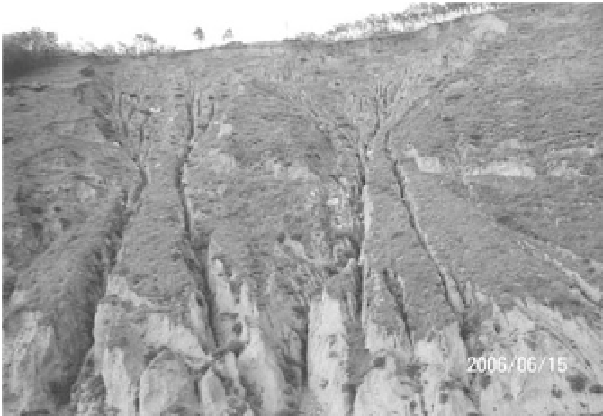Environmental Engineering Reference
In-Depth Information
Fig. 2.5
Rills developing into gullies due to rainstorm erosion
Channel erosion
(bank erosion)
—
Channel erosion occurs when bank vegetation is disturbed or when
the volume or velocity of flow in a stream is increased. Natural streams have adjusted over time to the
quantity and velocity of runoff that normally occur in the watershed. The vegetation and rocks lining the
banks are sufficient to prevent erosion under these steady-state conditions. However, when a watershed is
altered by removing vegetation, by increasing the amount of impervious surfaces, or by paving tributaries,
stream flows are changed also. Typical changes are an increase in the peak flow during storms and an
increase in stream velocity. The changing flow may scour the banks and causes bank collapse, as shown
in Fig. 2.6. Repair of eroded stream banks is difficult and costly. Erosion often occurs at stream bends and
at constrictions, such as those where bridges cross a stream. Erosion may also begin at the point where a
storm drain or culvert discharges into a stream. In the section with hardened banks the flow scours the
channel bed and causes channel incision.
Fig. 2.6
Channel erosion and collapse of vegetative banks and hardened banks on the Charlooze River in Iran, which
was caused by floods (See color figure at the end of this topic)




Search WWH ::

Custom Search